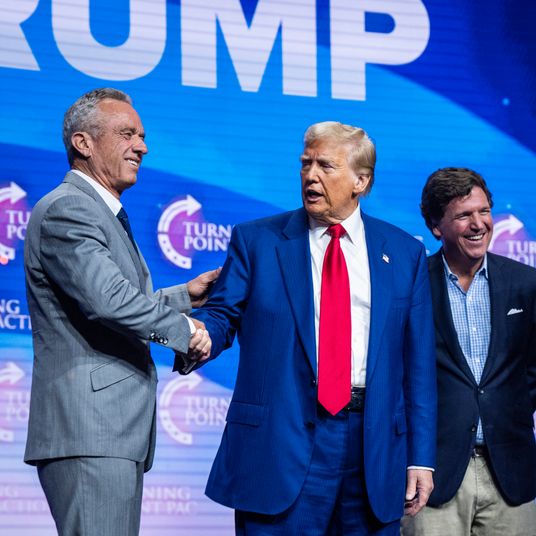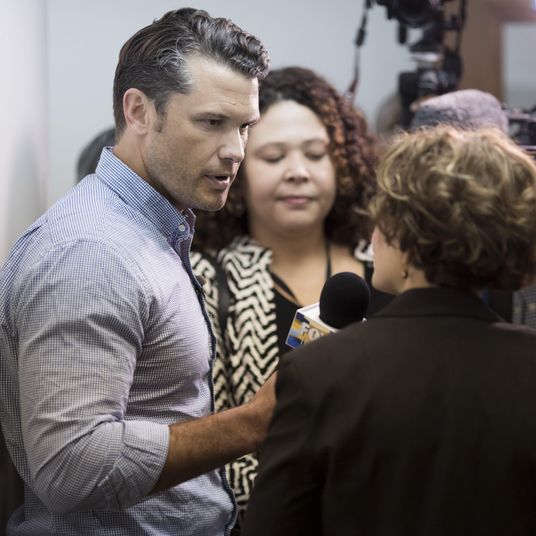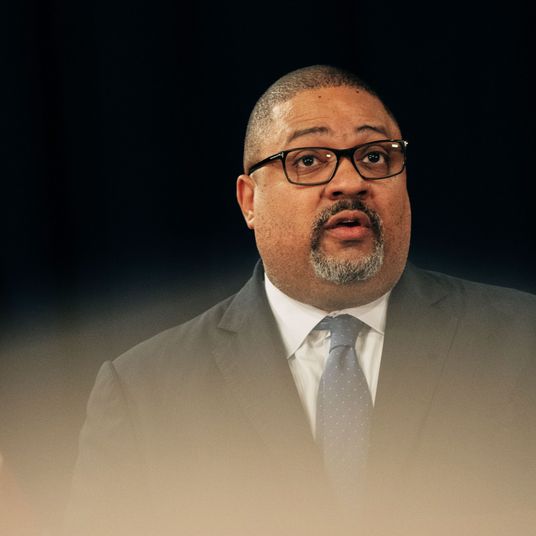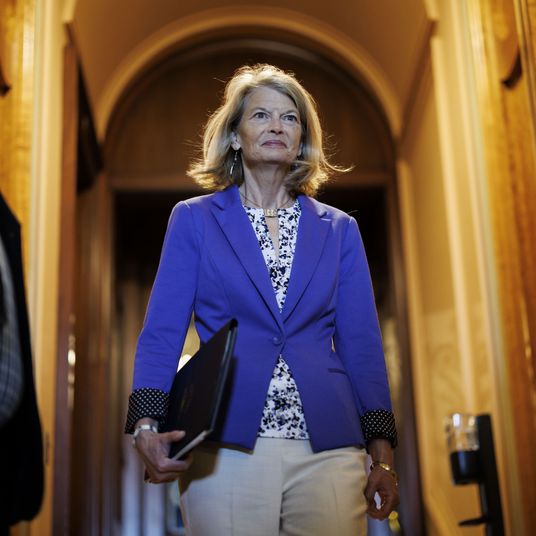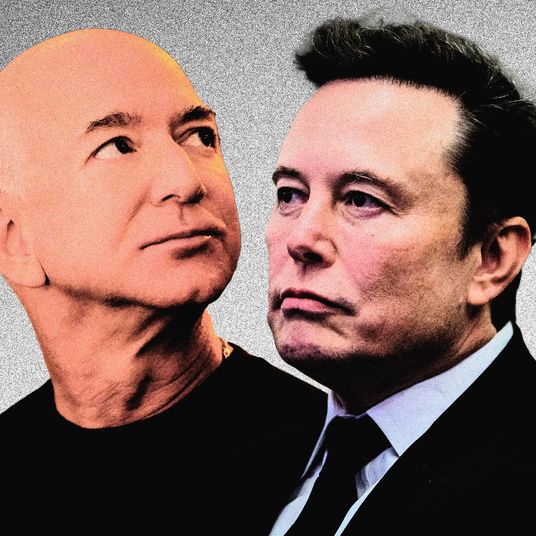
Most corporate boycotts are more bark than bite. So when a perpetually aggrieved network of right-wing media figures singled out Bud Light for partnering with transgender influencer Dylan Mulvaney, many assumed it wouldn’t have much of an impact on the company. But the campaign against Bud Light has shown staying power, seriously denting the sales of the No. 1 beer in America and prompting the company to respond clumsily. Now, a similar campaign of social-media-fueled outrage has zeroed in on Target, where activists purportedly outraged by the retailer’s Pride merchandise have created a threatening environment for employees. Other quintessential American corporations have recently found themselves in the culture-war crosshairs, too: Florida governor Ron DeSantis is in the midst of a war on Disney over its supposedly “woke” ideology, and Walgreens now finds itself on the front lines of the battle over birth control.
To get a better sense of why the campaigns against Bud Light and Target have been successful and how other companies will adjust to a new era of reactionary backlash, I spoke with political scientist and management scholar Daniel Diermeier, who has written extensively about corporate image-making and currently serves as the chancellor of Vanderbilt University. Diermeier thinks companies must have a precise idea of who their consumers are before taking a social stand — and predicts a new era of corporate wariness as the culture wars simmer.
When I first heard about the Bud Light customer boycott, I assumed it would have little to no effect, like similar efforts in the past. Instead, it has delivered a major hit to Bud Light’s sales, and it shows no sign of slowing down. ABC News put it this way: “Consumer boycotts typically fizzle. This one has expanded for an array of reasons. A hot-button, political controversy, outcry from political figures and celebrities, and amplification on social media.” How unusual is it for a campaign to be working this well? And do you think those factors are why it’s been so successful?
There are boycotts throughout history that have had a major impact. A very famous one is the Brent Spar case in the mid-’90s, when people boycotted Shell in Europe over an oil-storage facility. So it’s not that uncommon for them to be successful, but usually they’re not. It’s very hard to predict which ones will succeed in advance, and we have a tendency to look for specific reasons that explain it. But the underlying issue is really the following: that these things either take off or they don’t. And if they take off, they become a self-fulfilling prophecy where activity creates media coverage, media coverage makes people more aware of it, and then they get more involved.
There’s plenty of cases where social media was involved and public figures were involved, and it didn’t have much of an impact. So I would be cautious about assuming that we have a very good understanding of why this one was successful and most others aren’t.
Yeah, you could say it’s easier to foment a movement on social media than it was before. But at the same time, I don’t think — and maybe I’m wrong — that boycotts in the last few years have been any more successful than they were in the pre-internet age.
I think that’s true. And it’s easier for people to register their displeasure on social media, but because it’s easier, it’s also less impactful.
Bud Light didn’t do itself any favors with its crisis response. First, the CEO issued a statement saying, “We never intended to be part of a discussion that divides people.” And then the company put the people behind the Dylan Mulvaney campaign on leave. These moves understandably upset trans-rights advocates and a lot of other people, and they also didn’t mollify the company’s critics. What did you make of their strategy, or lack thereof?
Once you enter a highly polarized environment, it’s super difficult to mollify either one of the sides. And you just have to be clear that that’s what you want to do as a business strategy. It has to work with who you are as a company. An example where a company also triggered a lot of controversy but it worked out for them was Nike’s endorsement of Colin Kaepernick. But Nike is a different company and has a different brand profile than Bud Light. One has to be really, really thoughtful about how taking these types of stances will affect customers’ feelings about a brand.
A nice counterpoint to the Nike case was Pepsi. Pepsi had a commercial with Kendall Jenner handing out Pepsi cans at a Black Lives Matter protest, or something like that. And it was panned and people hated it. I think one reason why it worked for Nike is that Nike’s whole brand is based on supporting athletes — the whole thing is very athlete-focused. And so that made sense. For Pepsi or Bud Light, it’s just not obvious to me how what they were trying to do there is connected to their brand and how their customers feel about them.
I found something you wrote on boycotts in 2012, in which you advised companies to “stay out of polarized issues.” Well, almost everything in America is a polarized issue now, or has some political valence to it. And yet the trend since 2012 has been corporations leaning into the culture wars, not away from them. They have wanted people to know what their values are.
There’s been a period over the last couple of years when companies have felt much more comfortable with that approach. And you may have seen some of the research from Edelman’s Trust Barometer, in which people say that they want CEOs to lead, and that they have particular trust in CEOs who are connected with the company they work for. But I think this is really treacherous territory, because there are so few issues right now where there is consensus. The temptation to lean in on political debates is nontrivial, but it can really come back to bite you.
But of course you could say trans rights aren’t just a “political debate.” And if you think of everything that way, you’ll alienate customers too — in addition to being morally wrong.
I don’t have any problem with that. I think that’s great. But you just have to be clear on what happens. If you say, “This is so important to me that I think this is core to my values, this is a human’s-rights issue and I am going to put a stake on the ground” — I have total respect for that. But it’s just like gravity. You do something, and this is the reaction you’re going to have. And if you say you’re doing it from a moral point of view, that this is crucial for you or that this is connected to your values, you have to stick to it.
So you just have to think this through. And then if you’re comfortable with paying the cost of that because it’s based on principles, great. But you can’t be surprised anymore. That’s the main point. You have to be clear that we are living in an environment where issues having to do with social issues, culture-war issues, and a bunch of others — they’re going to lead that type of reaction. And then you’ll stick with it or you don’t, but you’ve got to be prepared.
Some of the people at the forefront of the Bud Light boycott have now extended their efforts to Target, this time over placement of the retailer’s Pride merchandise, among other things. This case is a little different, since unhinged people are threatening Target employees, or at least acting in a threatening manner. The company said last week that it would remove some LGBTQ+-related items from its stores, which also feels like caving. But their stated justification was that they didn’t want to put employees at risk. What did you make of that response compared to the Bud Light one?
Once the safety of your people is under threat, I think it’s a whole different environment. And that’s of course extremely unfortunate and worrisome. It’s hard for me to assess whether that was the real reason or not. You don’t want to invite violence in your stores. On the other hand, it’s just what we discussed before. If this is what you want to do as a company and you feel strongly about it, you go ahead and do it because it’s connected to your values, but you’re going to get controversy for it.
To what extent does the product in question matter here? One reason the boycott may have been effective is that there are many similar beers to Bud Light. I’m not so sure the same dynamic holds true for Target.
This is an important consideration. The key factors are: How much do people care, and how expensive is it to participate in a boycott? We talked about how much they cared. The other thing is, basically, how expensive is it to switch from one product to the next? So boycotts tend to be more successful on average when you have what we call treat substitutes.
One reason why the boycott against Shell in the mid-’90s was successful was that it’s quite easy to get your gasoline from another gas station. That’s a different conversation if there’s only one gas station in town, or if there are loyalty programs or other things that make it more difficult to switch. Retailers are very good targets for boycotts because their margins are slim and it’s easy to shop somewhere else. The way this often operates is through indirect boycotts. A good example of that was the boycott and attack on Calvin Klein over their controversial ads in the mid-’90s. The way this was done is they didn’t target Calvin Klein directly; they targeted the retailers. And that’s a very effective strategy because (1) the margins are slim, (2) it’s easy to shop somewhere else, and (3) when you’re targeting the products at Nordstrom, you’re not only targeting Calvin Klein products, but all of their products. Even a moderate-size boycott induces a lot of pain. There are many examples of that, like the Rainforest Action Network targeting Home Depot and Lowe’s.
Which got them to stop selling lumber sourced from old-growth forests.
The question is: How strong is the brand loyalty? Coke and Pepsi are both soft drinks, but people swear on one or the other. If it’s easy for a Bud Light drinker to consider Coors Light, then Bud Light is much more vulnerable. That, again, is something you have to think about when you’re going into the fray. How vulnerable am I?
Disney is an interesting case. It’s difficult to boycott Disney because they have unique products for which there really is no substitute. And entertainment products are unique. If you love Bruce Springsteen, you’re not going to just go to another concert because there’s another concert there. Bands, films, theme parks, they have that characteristic. Retailers are much easier to go after. Gas stations, easier to go after. Generic products, easier to go after. In the olden days, people targeted entertainment products over violent content and things like that. And it was difficult to do.
How do boycotts like the ones we’re seeing typically end?
Usually, the company backs down in one way or another, and then people move on. These things kind of tend to peter out. It’s rare, but not unheard of, that boycotts are sustained over a long time. And by the way, there’s a deeper reason for that. Very often, boycotts happen almost spontaneously. Bud Light customers aren’t organized in any way, shape, or form like a union would be, or an NGO. So the boycott is crucially connected with extensive media coverage, even if it’s social media. That media coverage kind of wakes everybody up and says, “Hey, you want to take action?” And then once that moves on, people tend to lose interest.
Do you think there’s going to be a retrenchment by companies back to an older way of doing things — trying really hard not to court any controversy — because they don’t want to become targets for this kind of backlash?
Yes, I think that’s going to happen. The last few years have been a bit of an outlier, and there’s been enough companies now that have had serious issues: Disney, Walgreens, Target, BlackRock. There’s a whole list of them. In some cases, the campaigns against them may have worked, and in some cases, they may have not worked — Disney may prevail against DeSantis in the end. But I think you will see retrenchment of CEOs taking positions on polarizing issues.
The issue is it’s not always your choice. So in the case of Walgreens, for example, you sell a product or you don’t sell it. Sometimes you’re really stuck between a rock and a hard place because you have to do one or the other. And so there are subtleties there. But I think anytime there’s a voluntary decision to enter the fray, only companies with a strong value orientation on one side or the other are going to be willing to do that.
This interview has been edited for length and clarity.















